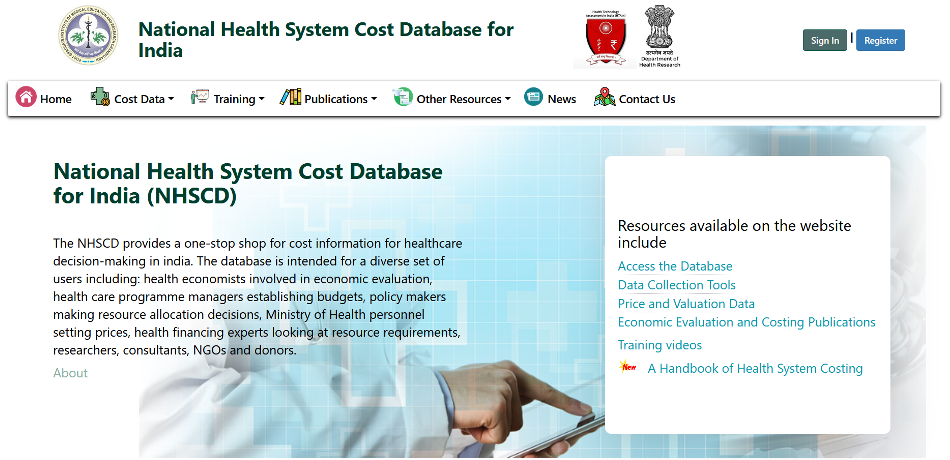Recommended

Blog Post
The low quality of health care services has become a primary concern globally and for low- and middle-income countries (LMICs) that have made bold commitments to progress toward universal health coverage. Despite improvements, an estimated five million deaths could be averted globally through better quality of care; a third more than could be averted by improving access. Hospitals are a natural place for quality to be improved. Doing so requires adequate measurement systems to understand where quality falls short (e.g., gaps in safety, effectiveness, timeliness, efficiency, person-centeredness, or equity of care), support for implementing solutions (e.g., public scorecards and performance-based incentives), and tracking progress (e.g., in healthcare associated infections, readmission rates, patient reported outcomes, and compliance to evidence based processes).
But where do these data come from in LMIC settings? Is the solution for LMICs to build costly (in terms of time and money) and sophisticated reporting systems to collect a plethora of quality indicators as many high-income countries do? How can hospitals in LMICs put in place measurement systems that capture all the dimensions of quality healthcare i.e. able to assess whether care is safe, effective, timely, efficient, equitable, and person-centered? We think many low-cost approaches including claims, electronic medical records (EMR), and patient surveys can be very informative and provide a good starting point to advance the quality agenda.
Making the most of routine data
Two obvious data sources that are now available in many settings are EMRs held at health care facilities (such as hospitals) and administrative data, such as claims that health care providers submit for reimbursement to health insurance companies or programs. Such data have been used in many OECD countries for routine quality assessments; there are several large initiatives in the U.S. alone and lots of guidance. These data are also increasingly available, including in LMICs with large-scale insurance schemes, such as Mexico, Ghana, and India.
Yet these data also have limitations. Most importantly, they are not originally intended to support quality measurement, but specific operational purposes, such as processing payments, ensuring fiduciary integrity, and keeping track of patients’ medical histories. As a result, these data can only support basic measurement and the data quality can be variable. Still, they can provide an important first glance and get the discussion going.
Electronic Medical Records
On first thought, EMRs are an obvious source of routine data to measure quality. EMRs usually contain a wealth of clinical information—say, on specific procedures, tests, and drugs—and might track patient outcomes, such as complications or mortality.
In a study with colleagues at Tata Memorial Hospital in Mumbai we used the hospital’s EMR to assess quality of care for patients with breast or cervical cancer. We identified quality indicators across the cancer care continuum and quality domains that are suitable for this context, figured out how to obtain the data from the EMR, and calculated these quality measures. Table 1 shows the data sources for each combination of the care continuum and quality domains.
Table 1: Quality indicators for cancer care from EMR
The main takeaway so far is that EMRs can indeed be a great resource for quality measurement. In our case, not all data for all quality measures was easily available and we had to manually code some free-text information, but at least it was recorded electronically.
Of course, hospital EMRs have important limitations as well. For example, as table 1 shows, they generally do not contain information on the early stages of the continuum (cancer prevention and screening) or the late stages (end-of-life care) because those activities may occur outside of the hospital. They also have little information on structural quality—though that information may be available from other sources, such as accreditation or certification reports. And finally, in some cases not all relevant data are recorded in the EMR or are not entered in a structured way. In those cases, it may still be possible to review clinical notes (those are often stored as scanned documents in the EMR) through targeted clinical audits to extract the relevant information. This approach is far from ideal as it is expensive, time consuming, and often challenging to reproduce unless audits are institutionalized.
Insurance claims
In many health systems, hospitals submit claims to get reimbursed for the care they provide, providing routine data that can be used to assess quality. One example is India’s hospital insurance schemes. We conducted a case study (see also this blog post) on an older scheme with data from 2014 and noted a lot of potential, but also serious data quality issues, especially for data fields that were not essential for the original purpose of executing payments. These data also contained relatively little detail on what care patients actually received and what their outcomes were. But still, it was possible to calculate basic measures like length of stay and examine patterns of care. Since then, India has moved to its flagship PMJAY scheme. Data systems, quality, and coverage have all improved. India’s National Health Authority itself now uses these data for quality assessments and tracking hospitals and is considering to use them for performance incentives.
Other administrative reporting systems can also yield useful data. For example, Mexico’s 2015 hospital benchmarking report calculated nine performance indicators from discharge data and uncovered huge variation across states.
Talk to your patients
Of course, one solution to the limitations of routine data is to collect additional data, keeping patients at the center and measuring what matters most to them. This can include dedicated surveys of patients to obtain directly reported information pertaining to their health, quality of life, or functional status and experience with the health care or treatment received. Many OECD countries have invested in these approaches; OECD itself has a Patient-Reported Indicator Surveys initiative and the U.S. National Institutes of Health maintains a repository of validated patient-reported outcomes measures. The U.S. Medicare program uses patient experience measures to offer incentive. Similarly, India’s PMJAY is considering to reward hospitals based on how much they improved patients’ “health-related quality of care.”
Make a plan and get started
Ultimately each of these sources for data on quality has its own limitations: important information is often not collected (in claims); not all data are easy to use (EMR); or they are costly to collect (patient surveys). Many health systems ultimately rely on a combination of quality measures drawn from various sources, in a way that the approaches and sources complement and strengthen another. That is the case, for example, in the U.S. Medicare program and for India’s PMJAY, which may use indicators constructed from discharge, survey, and other data.
To get started, it is useful to develop a comprehensive, long-term strategy and then use what’s available, while being aware of the shortcomings. As the above examples show, even rudimentary claims data can be used for assessments (calculating length of stay just requires the admission and discharge dates) and EMRs can be even more powerful. There is a strong value proposition to using these data even if they are limited. Regulators and insurance schemes can also ask hospitals to report data that is already in the EMR, which has relatively low reporting burden. This can be complemented with patient experience measures from dedicated surveys.
Improving quality of care is difficult but it’s not optional. Measuring and tracking even basic quality indicators is a great way to get started.
Disclaimer
CGD blog posts reflect the views of the authors, drawing on prior research and experience in their areas of expertise. CGD is a nonpartisan, independent organization and does not take institutional positions.






